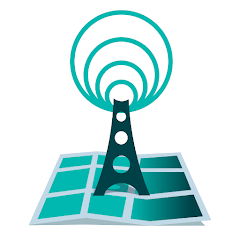

The free Opensignal app contains several features to help you accurately measure the daily experience you receive from your mobile network. No guesswork. It includes:
• Download speed, upload speed and latency test, speed test on mobile network or WiFi networks
• Speed test history, illustrated on a map or list
• Network availability statistics – how long you are connected on 2G, 3G, 4G, 5G or without signal
• Speed statistics obtained on all networks around the world
• Independent coverage maps made with user-provided data
• Free and ad-free
The speed test consists of a 5-second download test, a 5-second upload test, and several ping tests to determine the most likely speed you will experience. The speed test is performed on common internet CDN servers. The resulting speed is calculated over the average range of the samples.
Run speed tests and use test history to:
– Measure your network experience immediately
– Compare speed via WiFi and via mobile connection
– See the best places to connect on the map
– Find spots with higher speeds anywhere: at home or at work, indoors or outdoors
Availability based on signal data. Collected while the screen is active, the application calculates the time spent in 2G, 3G, 4G, 5G or without signal. This shows the network availability in the places where you use your mobile phone most frequently.
Use network availability to:
– Find out if the connections in the places you frequent are 3G or 4G
– Prove to your operator that you have a problem – too much time on 2G?
Opensignal provides network statistics for all carriers worldwide. Network statistics are generated by speed test and signal data collected over a period of 60 days. Location search and network statistics provide up-to-date download speed, upload speed, and latency user experience in your area.
Use network statistics to:
– Compare speeds across all carriers in your area – can you get better speeds?
– Choose the best provider if you leave the area and need a SIM card
– Helps you choose the best provider for a second SIM card in a dual SIM phone
Coverage maps are available for all carriers and extend to street level. Coverage maps are based on the signal strength of the user – where they have been, the signal data is aggregated and displayed on the map. Changes to colorblind settings.
Use coverage maps to:
– Look for areas with 4G or only 2G/3G – you should have a 4G signal according to the map, but you don’t? Check your device.
– Find out where carrier users get the best signal in your area
– See the actual coverage offered – no estimates

By using the app, you automatically provide us with data about your 2G, 3G, 4G LTE, and 5G speed and signal, which helps us understand your user experience and can help the industry build better wireless networks. You can disable data collection in Settings.
Permissions
LOCATION: Average speed tests are displayed on the map. It also allows the user to contribute to network statistics and coverage maps.
TELEPHONY: Help us get better data on dual SIM devices